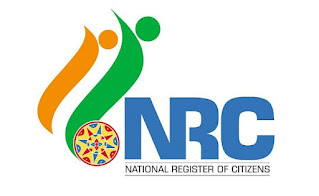Full form of PMMY is Pradhan Mantri Mudra Yojana
Many people, whose employment has been affected due to the lockdown imposed to break the chain of Corona virus. As factories/business were closed, many people have to leave and return to their homes. If you are also one of these and want to start your own business from home after lockdown, then the Prime Minister's Mudra Yojana (PMMY) of the government can help you. Under this scheme, the government gives loans to start a business at low rates. This loan can be from 50 thousand to 10 lakh rupees under different 3 categories. Another special thing is that under this scheme, the government has also prepared a project report for some businesses. On the basis of which you can estimate the expenses and profits coming in the business.
Who can avail loan under
PMMY:
Any resident of India, who wants to start his
business, want to expand the current business and need money for that, can take
a loan under PMMY. You can apply for a loan of up to 10 lakh rupees under the
Pradhan Mantri Mudra Yojana. This scheme started on 8th April 2015.
Types of loans:
- Under this scheme, three types of loan are available.
- Shishu Loans: Loans up
to Rs 50,000 are given under Shishu Loans.
- Kishore Loans: Loans ranging from Rs. 50,000 to 5 lakh are given under Kishore Loan.
- Tarun Loans: Loans ranging from 5 lakh to 10 lakh are given under Tarun loan.
Interest rates:
Rates of interest may vary from bank to bank under Pradhan Mantri Mudra Yojana. Different banks may charge different interest rates for Mudra loans. The interest rate also depends on the nature of the business of the borrower and the risk involved. Generally, the minimum interest rate is 12 percent.
How can I take a PMMY
loan:
For taking loan under PMMY, you have to apply to the government or bank branch. To start your own business, you have to provide the ownership or rental documents, work related information, Aadhaar, PAN number and many other documents. The form can also be downloaded online.
Step to step
information:
Download the loan application form from the website https://www.mudra.org.in/. The form for Shishu loan is different, while the form is same for Tarun and Kishore loan. Fill all the details in the loan application form. Provide the information of the correct mobile number, Aadhaar number, name, address etc. If you want to start a business, please provide information. Applicants falling under OBC, SC / ST categories will have to provide caste certificate & 2 passport photos. After filling the form, go to any public or private bank and complete all the procedures. Submit all the documents. The bank takes all information about your business. On that basis, bank approves the loan under PMMY.
Required documents:
- Identity Certificate
- .
Residencial Proof
- .
Machinery, etc.
Information
- .
Passport Size Photo
- .
Business Certificate
- .
Address Proof of Address
Type of business:
- .
Companies in
the Self-Proprietorship
- .
Partnership
- .
Service Sector
- .
Micro Industry
- .
Repair Shops
- .
Trucks Owners
- .
Food Dealers (Fruits and
Vegetables)
- .
Micro Manufacturing
Firms
